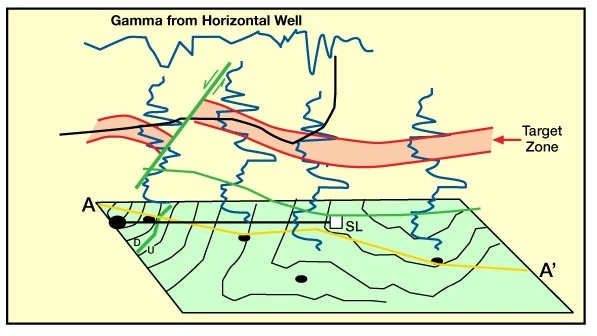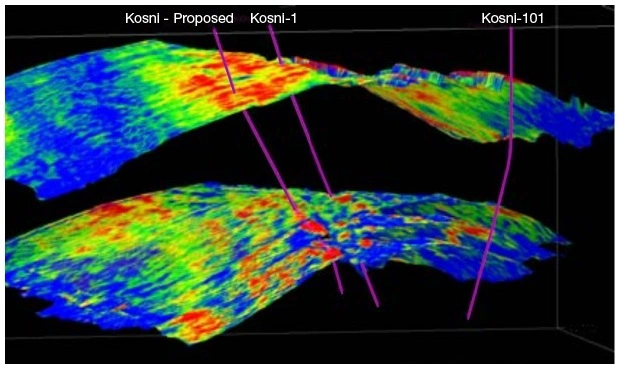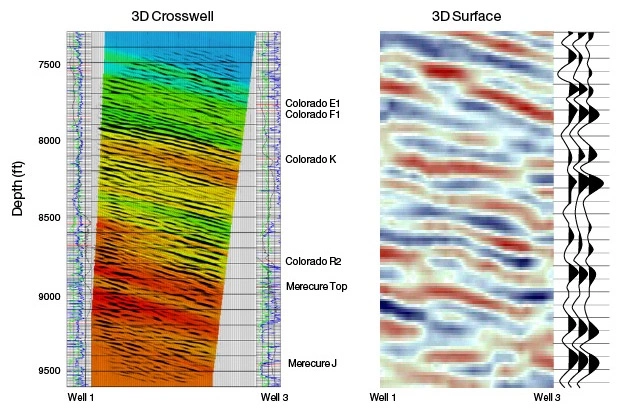Seismic Wave Types
Seismic Wave Type Overview
Seismic waves travel at speeds which depend on the elasticity and density of the medium they are traveling through solid, liquid, and air. Therefore seismic wave observations can be used to investigate the earth’s interior. The travel times of the wave combined with wave amplitudes, aids in the detection of geologic features subsurface structures within the earth. These subsurface geological structures include major surfaces between rock types, as well as structural features such as faults and anticlines.
It is important to understand the physics of a given wave form in order to recognize these significant substructures below the surface of the earth. Two classifications of wave types exist: body waves and surface waves (Figure 1).
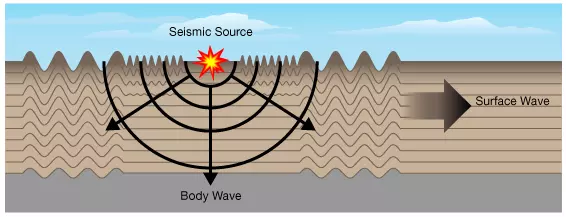
Body Waves
Body waves travel through the interior of the earth. They create raypaths refracted by the varying density and elasticity (stiffness) of the earth’s interior, including those boundaries between the mantle, the liquid outer core, and the solid inner core (Animation 1). The density and elasticity, in turn, vary according to temperature, composition, and phase. This effect resembles the refraction of light waves.
Body waves can be classified into two major categories: primary and secondary waves.
Animation 1
Body Wave Categories
Primary Waves
Primary waves (P-waves) are compressional waves that are longitudinal in nature (Animation 2). P-waves are pressure waves that travel faster than other waves through the earth. Therefore they arrive at geophones before any other wave types. These P-waves can travel through any type of earth’s material, including through fluids, such as water, oil, liquid, or gas. They can also travel at nearly twice or more the speed of secondary waves. In air, they take the form of sound waves where typical speeds can be 330 m/s. In contrast, P-waves travel 1450 m/s in water and about 5000 m/s in granite.
Secondary Waves
Secondary waves (S-waves) are shear waves that are transverse in nature (Animation 2). S-waves arrive at geophones after the faster-moving P-waves and travel through the earth perpendicular to the direction of propagation. The shear wave can vibrate in any direction as it moves. For example, in the case of horizontally polarized S-waves, the earth moves interchangeably to one side and then to the other. S-waves travel only through solids, as fluids (liquids and gases) do not support shear stresses. S-waves are slower than P-waves, where their speeds are typically about 60% of that of P-wave velocities.
Surface Waves
Surface waves are seismic waves that travel along the earth’s surface (Figure 4). The energy from these waves decreases as they travel further from the source. Surface wave velocity is lower than that of seismic body waves the P and S waves. The reduction in velocity is due to the long duration, and large amplitude, of the surface waves. This reduction in velocity makes surface waves a destructive form of seismic wave because of the vertical orbital motion of the energy. However, surface waves contain several types of data that can be utilized for more complex seismic analysis.
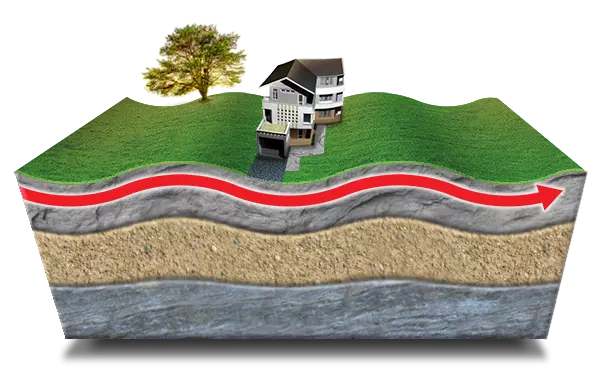
Surface waves can be classified into two major categories: Rayleigh waves and Love waves.
Surface Wave Categories
Rayleigh Waves
Rayleigh waves, also referred to as ground roll, are surface waves that travel as ripples (Animation 4). Their motion is similar to that of waves on the surface of water. However Rayleigh waves differ in that they are elastic-adaptable-seismic waves, whereas waves generated by water are gravitational in nature. Rayleigh waves are also known to travel slower than body waves because a vast majority of its velocity comprises homogeneous elastic media. In the layered areas of the earth, such as the crust and upper mantle, the velocity of Rayleigh waves depends on its frequency and wavelength.
Love Waves
Love waves are horizontally polarized shear waves (S-waves). They represent the horizontal shifting of the earth’s surface during an earthquake (Animation 5). Love waves exist in the presence of semi-infinite material, or rock type, that is superimposed by an upper layer of finite thickness. Love waves travel slightly faster than Rayleigh waves because they have a lower frequency. Love waves have the largest amplitude of all wave types.
Other Seismic Methods
In addition to reflection and refraction, seismic methods can also include tomography and microseismic.
Tomography
Seismic tomography is a technique for imaging the earth’s subsurface characteristics in an effort to understand deep geologic structures. Tomography is the act of gathering ample compressional wave (P-wave) and shear wave (S-wave) travel time measurements in sections, much like a CT scanner in the medical field. These measurements can allow for the compilation of 3D images to reconstruct subsurface structures, provide an understanding of the distribution of fluids (oil and water), or even how to locate subterranean mine shafts (Figure 3).
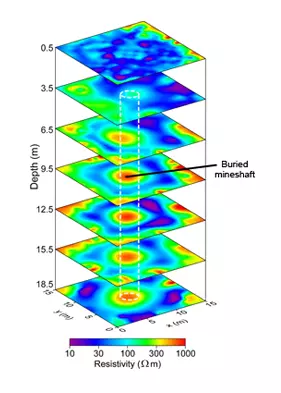
Seismic tomography has several applications in exploration geophysics. A specific form of tomography, crosshole transmission tomography, is the ability to see an image of subsurface features between boreholes with greater accuracy than conventional surface reflection methods. Figure 4 is an example of three wells, with traditional gamma ray data along the borehole, which are combined with the crosshole tomography. This allows for more detailed subsurface information between the wells.
Seismic tomography can also be used to characterize fractured bedrock, map groundwater reservoirs, and locate ore bodies. Global seismic tomography is used to interpret the presence of ancient sub-ducted slabs, locate the source of hotspots, and model convection patterns in the mantle.
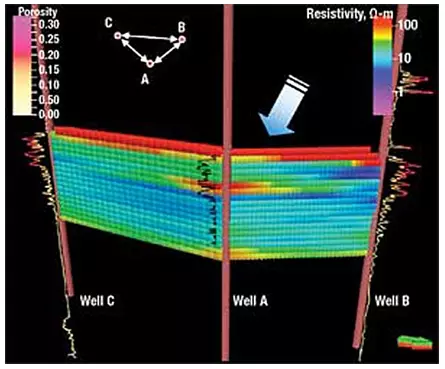
Microseismic
Microseismic, also known as passive seismic, is the detection and monitoring of natural low frequency earth movements. This produces seismic noise. Seismic noise includes a small amount of body waves (P and S waves). However, surface waves (Rayleigh and Love waves) dominate seismic noise. This process typically utilizes portable seismometers to identify geological subsurface structures and to discover underground gas, oil, or other resources (Figure 5).
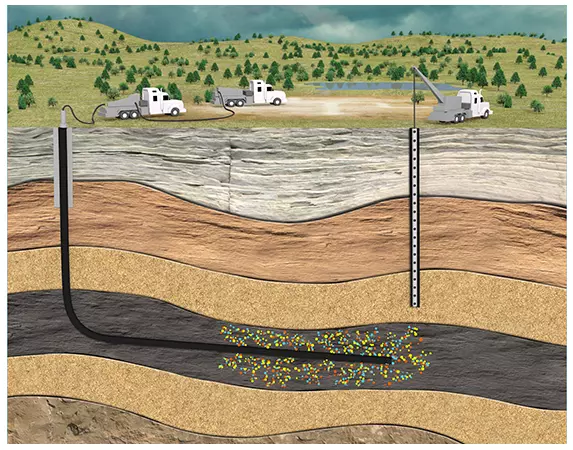
Microseismic movements do not have a controlled source, such as an explosion. Microseismic movements originate from small earthquakes, shifting in the earth, or events due to hydraulic fracturing (Figure 6). Therefore the time of origin of the movement is unknown and must be determined from the raw collected data of the seismometers. Microseismic in the oil and gas industry is mainly used to monitor the hydraulic fracturing of tight reservoirs. However, it can also be used to monitor production of both oil and gas, especially in cases where wellbore stability may be an issue.
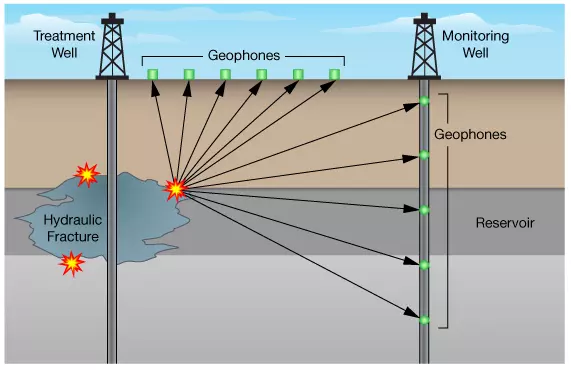
 Petro Shine The Place for Oil and Gas Professionals.
Petro Shine The Place for Oil and Gas Professionals.

